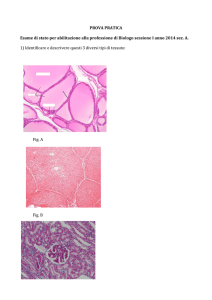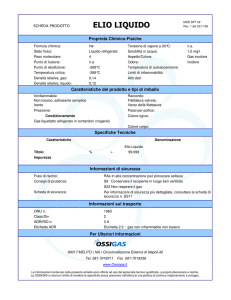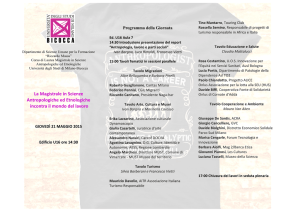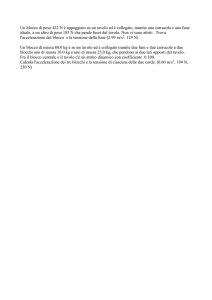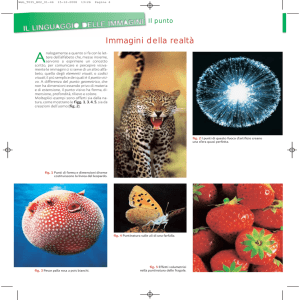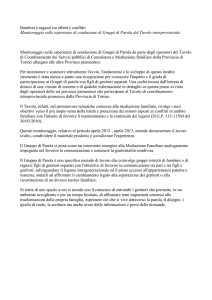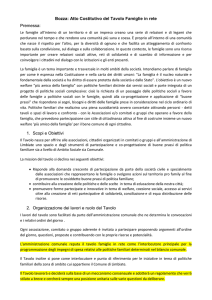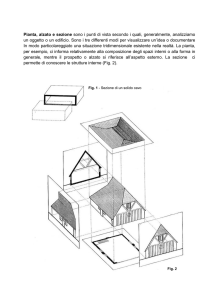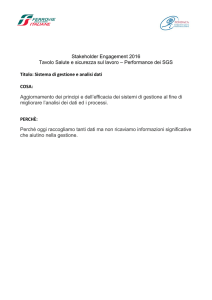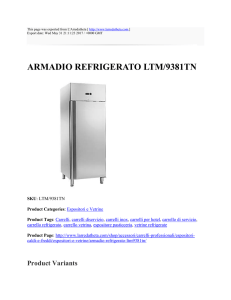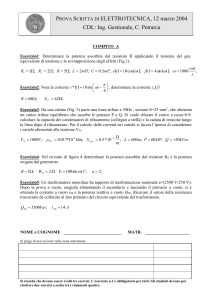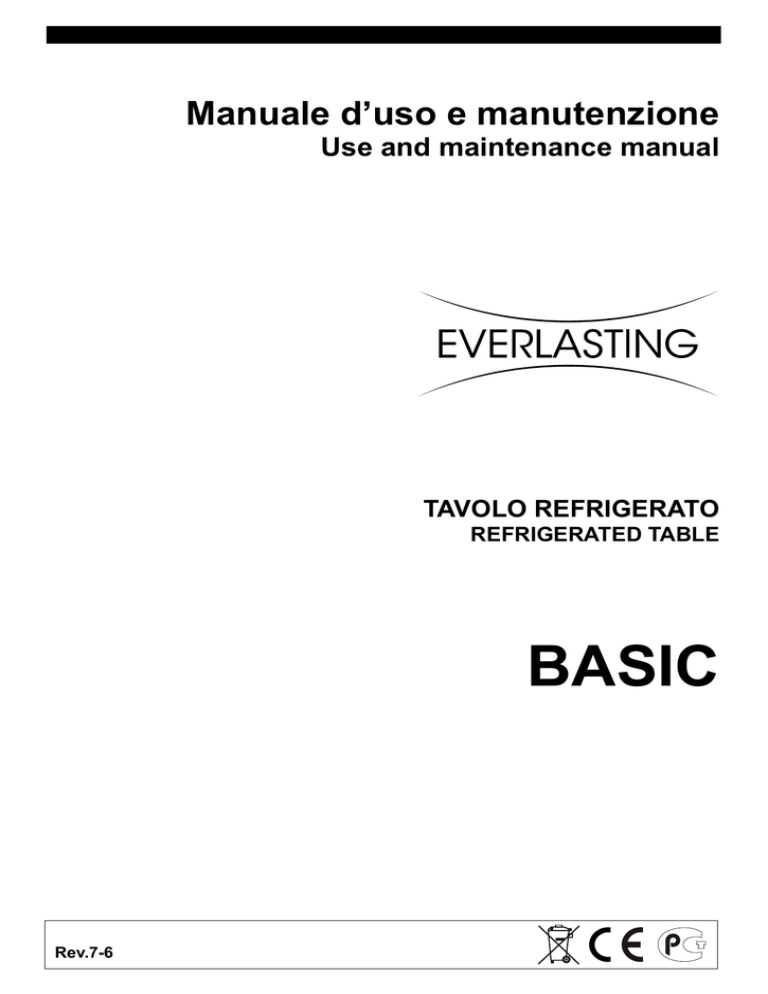
Manuale d’uso e manutenzione
Use and maintenance manual
TAVOLO REFRIGERATO
REFRIGERATED TABLE
BASIC
Rev.7-6
ITALIANO
Grazie per aver scelto questo prodotto.
Leggere attentamente le avvertenze contenute nel presente manuale in quanto forniscono importanti
indicazioni riguardanti la sicurezza, d’uso e di manutenzione.
Conservare con cura questo manuale per ogni ulteriore consultazione dei vari operatori.
In alcune parti del manuale è presente il simbolo
rispettare ai fini della sicurezza.
indicante una avvertenza importante da
CAPITOLO 1 CARATTERISTICHE LIMITE DI FUNZIONAMENTO
Il tavolo refrigerato è stato progettato e realizzato per poter funzionare in condizioni ottimali in ambienti
con temperature fino a +10°C e i +43°C , con adeguato ricircolo d’aria. In luoghi con caratteristiche
diverse da quelle previste non sarà possibile garantire le prestazioni dichiarate.
La tensione di alimentazione deve essere 230V +/- 10% 50Hz di serie, oppure quella indicata
sull’etichetta CE
Il tavolo refrigerato è utilizzabile esclusivamente entro i limiti di temperatura previsti dal costruttore,
per identificare il corretto range di funzionamento leggere le lettere successive all’ultima cifra del
modello riportato sulla targhetta CE e confrontarla con la tabella di seguito riportata:
Serie
Temperatura
TNV
BTV
0° +10°C
-10° -20°C
Il tavolo refrigerato è conforme alle direttive Europee come riportato in dettaglio nell’allegato
“Dichiarazione CE di conformità”
I dati sono riportati sull’etichetta CE posta nel tavolo refrigerato, all’interno del vano motore.
Azienda costruttrice
Modello
Model
Codice articolo
Tensione di alimentazione
Assorbimento elettrico
Tipo di fluido refrigerante
Grado di protezione
Cod.Art
Code
Modello
Matricola
Ser. Number
Tensione
Tension
Assorbimento
Absorption
Matricola
Classe climatica
CL.
A
Gas
Gaz
Kw
Potenza elettrica
Kg
Quantità di fluido refrigerante
IP20, CLASS 1
Il fabbricante declina qualsiasi responsabilità per gli usi impropri e non ragionevolmente previsti
del tavolo refrigerato e per tutte quelle operazioni effettuate sullo stesso trascurando le indicazioni
riportate sul manuale.
1
ITALIANO
Di seguito sono elencate le principali norme di sicurezza generali :
- Non utilizzare o inserire apparecchi elettrici all’interno dei comparti refrigerati se non del tipo
consigliato dal produttore
- Non toccare il tavolo refrigerato avendo mani o piedi umidi o bagnati
- Non usare il tavolo refrigerato a piedi nudi
- Non inserire cacciaviti od altro tra le protezioni o le parti in movimento
- Non tirare il cavo di alimentazione per scollegare il tavolo refrigerato dalla rete di alimentazione
elettrica
- Il tavolo refrigerato non è adatto all’uso da parte di persone (compresi i bambini) con problemi fisici,
mentali o con mancanza di esperienza e conoscenza a meno che esse non siano controllate o istruite
all’uso dell’apparecchio da una persona responsabile per la loro sicurezza. I bambini devono essere
sorvegliati per assicurarsi che non giochino con l’apparecchio.
- Prima di effettuare qualsiasi operazione di pulizia o manutenzione disinserire il tavolo refrigerato
dalla rete di alimentazione elettrica spegnendo l’interruttore generale e staccando la spina
- In caso di guasto e/o di cattivo funzionamento del tavolo refrigerato, spegnerlo ed astenersi da
qualsiasi tentativo di riparazione o di intervento diretto. E’ necessario rivolgersi esclusivamente a
personale qualificato.
Il tavolo refrigerato è costituito da una monoscocca modulare rivestita con materiali diversi e isolata
con poliuretano espanso a densità 42 kg/m3.
In fase di progettazione e realizzazione sono stati adottati tutti gli accorgimenti per ottenere un tavolo
refrigerato conforme ai requisiti di sicurezza e igiene quali: gli angoli arrotondati interni, imbutiture con
scarico all’esterno dei liquidi di condensa, assenza di superfici rugose, protezioni fisse su componenti
mobili o pericolosi.
I prodotti devono essere stivati rispettando i limiti di carico riportati in tabella allo scopo di assicurare
una circolazione efficace dell’aria all’interno del tavolo refrigerato.
Limiti di carico in Kg.
Griglia 325x530
15
Cassetto 1/2 GN 1/1
25
Griglia 150x510
7
Cassetto interno H.75 GN 1/1
20
Vassoio Inox GN 1/1
15
Cassetto interno H.150 GN 1/1
20
L’installazione deve essere effettuata esclusivamente da un tecnico specializzato
1.1 Proibizione della rimozione dei ripari e dei dispositivi di sicurezza
E’ assolutamente vietata la rimozione delle protezioni di sicurezza.
Il fabbricante si esime da qualsiasi responsabilità per incidenti dovuti all’inadempienza del suddetto
obbligo.
2
ITALIANO
1.2 Indicazioni sulle operazioni di emergenza in caso di incendio
- staccare il tavolo refrigerato dalla presa elettrica oppure interrompere l’alimentazione generale
- non utilizzare getti d’acqua
- usare estintori a polvere o CO2
CAPITOLO 2 PULIZIA DEL TAVOLO REFRIGERATO
Poiché nel tavolo refrigerato vanno conservati dei prodotti alimentari è necessaria l’operazione di
pulizia ai fini dell’igiene e della tutela della salute. La pulizia del tavolo refrigerato è già stata effettuata
in fabbrica. Si suggerisce tuttavia di effettuare un ulteriore lavaggio delle parti interne prima dell’uso,
assicurandosi che il cavo di alimentazione sia scollegato.
2.1 Pulizia del mobile interno ed esterno
Allo scopo vengono indicati
- i prodotti di pulizia : acqua e detergenti neutri non abrasivi. NON USARE SOLVENTI E DILUENTI
- i metodi di pulizia : lavare le parti interne ed esterne con acqua tiepida e sapone neutro o con panno
o spugna con prodotti idonei
- la disinfezione : evitare sostanze che possano alterare le caratteristiche organolettiche degli alimenti
- la risciacquatura : panno o spugna imbevuti d’acqua tiepida. NON USARE GETTI D’ACQUA
- la frequenza : si consiglia settimanale, l’utilizzatore può’ stabilire frequenze diverse in funzione del
tipo di alimenti conservati.
IMPORTANTE: Pulire frequentemente le guarnizioni delle porte.
Alcuni prodotti conservati protrebbero rilasciare degli enzimi che attaccano la
guarnizione deteriorandola molto velocemente. Per la pulizia utilizzare prodotti
specifici disponibili a richiesta anche presso la nostra rete commerciale.
2.2 Pulizia del condensatore
L’efficienza del tavolo refrigerato è compromessa dall’intasamento del condensatore per cui è necessario
provvedere alla pulizia dello stesso con frequenza mensile. Prima di effettuare questa operazione
spegnere il tavolo refrigerato, disinserire il cavo di alimentazione e procedere come segue :
aprire il frontale portacomandi svitando le apposite viti e facendolo ruotare sulle cerniere.
Con l’ausilio di un getto d’aria o pennello asciutto eliminare, con movimento verticale ( Fig. 1 ), la
polvere e la lanuggine depositata sulle alette. Nel caso di depositi untuosi si
Fig.1
consiglia l’impiego di un pennello imbevuto di appositi detergenti. A questo
punto procedere alla pulizia come per i modelli a frontale fisso.
Ad operazione ultimata avviare nuovamente il tavolo refrigerato.
ALCOOL
Durante questa operazione usare i seguenti dispositivi di protezione individuali : occhiali,
maschera di protezione delle vie respiratorie, guanti resistenti agli agenti chimici ( benzine-alcool ).
3
ITALIANO
CAPITOLO 3 VERIFICHE PERIODICHE DA ESEGUIRE
Di seguito vengono elencati i punti o i gruppi del tavolo refrigerato che necessitano di verifiche
periodiche :
- integrità ed efficienza delle guarnizioni delle porte
- integrità delle griglie a contatto con gli alimenti
- integrità delle cerniere di fissaggio delle porte
- integrità del cavo di alimentazione
3.1 PRECAUZIONI IN CASO DI LUNGA INATTIVITA’
Per lunga inattività si intende un periodo di fermo superiore a 15 giorni.
E’ necessario procedere come segue :
- spegnere il tavolo refrigerato e scollegarlo dall’alimentazione elettrica
- effettuare la pulizia accurata del mobile interno, ripiani, vassoi, guide e supporti con particolare
attenzione ai punti critici quali giunzioni e guarnizioni magnetiche, secondo le indicazioni riportate
al capitolo 2.
- lasciare le porte semiaperte per evitare il ristagno d’aria e umidità residua
CAPITOLO 4 MANUTENZIONE PREVENTIVA
4.1 Riavvio dopo lunga inattività
Il riavvio dopo lunga inattività è un evento che richiede un intervento di manutenzione preventiva.
E’ necessario eseguire una accurata pulizia come descritto nel capitolo 2.
4.2 Controllo dei dispositivi di avvertimento e comando
Si consiglia di richiedere al rivenditore un contratto di assistenza o manutenzione periodica che
comprenda :
- pulizia del condensatore
- verifica della carica del fluido frigorigeno
- verifica del funzionamento a ciclo completo
- sicurezza elettrica
CAPITOLO 5 MANUTENZIONE STRAORDINARIA E RIPARAZIONE
Tutti gli interventi di manutenzione che non sono stati descritti nei capitoli precedenti sono da
considerare “ Manutenzione Straordinaria “. La manutenzione straordinaria e la riparazione sono
compiti riservati esclusivamente al personale specializzato ed autorizzato dal fabbricante.
Si declina ogni responsabilità per interventi condotti dall’utilizzatore, da personale non autorizzato,
o per l’utilizzo di ricambi non originali.
4
ITALIANO
CAPITOLO 6 DIAGNOSTICA
Possono verificarsi degli inconvenienti, nel tavolo refrigerato, evidenziati come esposto in tabella :
DESCRIZIONE GUASTO
il tavolo refrigerato non si accende
il gruppo frigorifero non parte
POSSIBILI CAUSE
manca tensione elettrica
verificare spina, presa, fusibili, linea
altro
contattare assistenza tecnica
raggiunta temperatura impostata
impostare nuova temperatura
sbrinamento in corso
attendere fine ciclo / spegnere e riaccendere
pannello comando in avaria
contattare assistenza tecnica
altro
contattare assistenza tecnica
il gruppo frigorifero funziona continua- locale troppo caldo
mente ma non raggiunge la temperatu- condensatore sporco
ra impostata
fluido frigorigeno insufficiente
il gruppo frigorifero non si ferma alla
temperatura impostata
blocco di ghiaccio sull’evaporatore
ristagno di acqua o ghiaccio nel gocciolatoio
RIMEDIO
aerare maggiormente
pulire il condensatore
contattare assistenza tecnica
arresto ventola condensatore
contattare assistenza tecnica
tenuta insufficiente sportelli
verificare guarnizioni / disposizione della
merce
evaporatore brinato completamente
sbrinamento manuale
altro
contattare assistenza tecnica
pannello comando in avaria
contattare assistenza tecnica
sonda temperatura P1 in avaria
contattare assistenza tecnica
uso improprio
vedi capitolo 1.
resistenza sbrinamento guasta
contattare assistenza tecnica
sonda sbrinamento P2 in avaria
contattare assistenza tecnica
scarico ostruito
pulire la pipetta e lo scarico
tavolo refrigerato non livellato
verificare livellamento
CAPITOLO 7 ISTRUZIONI PER LA RICHIESTA DI INTERVENTI
Per qualsiasi problema di carattere tecnico, e le eventuali richieste di intervento o assistenza, è
necessario rivolgersi esclusivamente presso il proprio rivenditore.
CAPITOLO 8 SICUREZZA ED ANTINFORTUNISTICA
Il tavolo refrigerato è stato realizzato con gli opportuni accorgimenti al fine di garantire la sicurezza
e la salute dell’utilizzatore.
Di seguito vengono elencate le misure adottate per la protezione contro i rischi meccanici :
- stabilità : Il tavolo refrigerato, anche con griglie estratte, è stato progettato e costruito in modo
che nelle condizioni di funzionamento previste, la sua stabilità sia tale da consentirne l’utilizzazione
senza rischio di rovesciamento, di caduta o di spostamento intempestivo
- superfici, spigoli, angoli : gli elementi accessibili del tavolo refrigerato sono privi, entro i limiti
consentiti dalle loro funzioni, di angoli acuti e spigoli vivi, nonché di superfici rugose che possano
causare lesioni
- elementi mobili : sono stati progettati, costruiti e disposti per evitare rischi. Talune parti sono munite
di protezioni fisse in modo tale da prevenire rischi di contatto che possono provocare infortuni
5
ITALIANO
Di seguito vengono elencate le misure adottate per la protezione contro altri rischi :
- energia elettrica : Il tavolo refrigerato è stato progettato, costruito ed equipaggiato in modo da
prevenire i rischi elettrici, nel rispetto della normativa specifica vigente
- rumore : Il tavolo refrigerato è stato progettato e costruito in modo tale che i rischi dovuti all’emissione
di rumore aereo siano ridotti al livello minimo
8.1 dispositivi di sicurezza adottati
E’ assolutamente vietato ( Fig. 2 ) :
- rimuovere le targhette applicate sul fianco sinistro del tavolo refrigerato indicanti le caratteristiche
tecniche ( 1 ) e le avvertenze per il collegamento della messa a terra ( 2 )
- rimuovere la targhetta, applicata in prossimità della griglia posteriore e sul frontale portastrumenti,
che avverte di escludere l’alimentazione prima di intervenire sull’apparecchio ( 3 )
- rimuovere la targhetta, applicata all’interno del vano-motore, indicante la messa a terra ( 4 )
- rimuovere la targhetta, applicata sul cavo di alimentazione, indicante il tipo di alimentazione ( 5 )
Il fabbricante declina qualsiasi responsabilità sulla sicurezza del tavolo refrigerato se questo dovesse
accadere.
Fig.2
8.2 Indicazioni per il funzionamento ottimale
- non ostruire le prese d’aria del vano-motore
- non introdurre cibi o liquidi ancora caldi
- disporre le derrate alimentari sugli appositi ripiani o contenitori.
Non disporle direttamente sul fondo, né addossate alle pareti, alle porte o alle protezioni fisse
- richiudere accuratamente le porte
- tenere sempre sgombro il foro di scarico dell’acqua di sbrinamento
- limitare, per quanto possibile, la frequenza di apertura delle porte e la loro durata. Ogni apertura
provoca un cambiamento della temperatura interna
- caricare la merce sui ripiani in modo graduale
- effettuare periodicamente la manutenzione ordinaria ( vedi capitolo 3 )
In caso di interruzione del circuito di alimentazione elettrica o di guasto evitare l’apertura delle porte
allo scopo di mantenere una temperatura omogenea all’interno del tavolo refrigerato.
Se il problema ha una durata di più ore si consiglia lo spostamento del materiale in luogo adatto.
6
ITALIANO
CAPITOLO 9 COMANDI
9.1 Descrizione dei comandi e pulsanti ( Fig. 3)
Il pannello di comando è un termoregolatore digitale per il freddo ed è provvisto di 4 pulsanti con
funzioni specifiche:
Fig.3
I pulsanti comando di cui è dotato il tavolo refrigerato sono :
Display (7)
Visore di temperatura e dello stato di funzionamento
del tavolo refrigerato
Tasto SET (2)
Accede al Set-point, conferma i parametri modificati.
Se premuto per oltre 4 secondi accende o spegne
il tavolo refrigerato.
Tasto neutro (1)
In questa applicazione il tasto non è abilitato.
Tasto UP (10)
Consente l’incremento dei valori, (temperatura più
alta) e, se premuto per 4 secondi all’attivazione
manuale del ciclo di sbrinamento. In combinazione
con il tasto down permette di visualizzare il menù
parametri.
Tasto DOWN (11)
Consente il decremento dei parametri, (temperatura
più bassa). Se premuto per 4 secondi consente di
visualizzare la temperatura della sonda evaporatore.
Se premuto, in combinazione con il tasto set il display
visualizzerà LO e la tastiera sarà bloccata, non sarà
consentita nessuna modifica. Premere nuovamente
entrambi i tasti contemporaneamente per sbloccare
la tastiera il display visualizzerà UN.
7
ITALIANO
9.2 INDICAZIONI RELATIVE ALL’USO
9.2.1 Avviamento
Prima di effettuare l’avviamento del tavolo refrigerato è necessario verificare che il collegamento
elettrico e l’allacciamento siano stati realizzati come previsto nel capitolo 13.
Verificare la presenza tensione, icona 9 accesa e display spento.
Sequenza d’avviamento (fig.3).
► Premere
il tasto Set (2) per oltre 4 secondi
il controllore esegue un test di autodiagnosi
illuminando tutte le icone e display.
Attendere che il pannello comandi cessi di lampeggiare e rimanga acceso il display.
9.2.2 Modi d’arresto (fig.3)
► Premere
il tasto Set (2) per oltre 4 secondi
il display si spegnerà, mentre l’icona di presenza
tensione 9 resterà accesa segnalando lo stand-by
9.2.3 Impostazione temperatura (fig.3)
Per impostare il set di temperatura desiderato all’interno dei parametri di riferimento procedere come
segue:
► Premere
brevemente il tasto SET (2)
sul display compare il valore di Setpoint
temperatura impostato
Per incrementare il valore
agire sul tasto UP (10) e non operare su alcun tasto per 10 secondi oppure premere il tasto Set
per confermare il nuovo valore.
Per abbassare il valore
agire sul tasto DOWN (11) e non operare su alcun tasto per 10 secondi oppure premere il tasto
SET per confermare il nuovo valore.
9.2.4 Sbrinamento automatico e manuale (fig.3)
Il tavolo refrigerato è impostato, dalla fabbrica per poter effettuare lo sbrinamento automatico ad
intervalli prestabiliti come segue:
Gamma TNV (temp. normale ventilata ) 1 sbrinamento con durata massima di 50 min ogni 8 ore.
Gamma BTV (bassa temperatura) 1 sbrinamento con durata massima di 30 min. ogni 6 ore.
L’utilizzatore può effettuare lo sbrinamento manuale a seconda delle proprie necessità agendo
come segue:
► Premere
per 4 secondi il tasto UP (10)
il tavolo refrigerato andrà in sbrinamento,
sempre che l’evaporatore lo richieda.
8
ITALIANO
NB. Al termine del ciclo di sbrinamento il led si spegnerà e il tavolo refrigerato automaticamente
riprenderà il ciclo di normale raffreddamento.
9.2.5 Blocco tastiera (fig.3)
Tenendo premuto contemporaneamente i tasti SET (2) e DOWN (11) per più di 4 secondi apparirà
la label LO e la tastiera sarà bloccata.
Per sbloccare ripetere l’operazione.
9.2.6 Allarmi e segnalazioni (fig.3)
Sul termoregolatore digitale compaiono le seguenti segnalazioni di funzioni in atto:
Icona di presenza tensione (9)
è accesa e il display spento quando il
termoregolatore è in stand-by
è acceso quando il compressore è in funzione,
lampeggia quando è in attesa per protezione
attivata compressore
è acceso durante uno sbrinamento, lampeggia
durante lo sgocciolamento
è acceso quando è in funzione il ventilatore,
lampeggia quando è in attesa per tempo di
ritardo attivazione ventilatore
indica se il termoregolatore legge la temperatura in
gradi centigradi °C oppure in gradi Fahrenheit
è acceso in caso di allarmi o anomalia sonde
in corso
Led compressore (5)
Led sbrinamento (4)
Led ventilatore evaporatore (3)
Led unità di misura (8)
Led allarme (6)
In caso di allarme sul display possono comparire le seguenti label:
AL allarme di temperatura minima
la temperatura ha superato il minimo valore
impostato
la temperatura ha superato il massimo valore
impostato
la sonda del vano interno è guasta, il compressore
rimarrà sempre in funzione
la sonda evaporatore è guasta, lo sbrinamento
e la ventilazione non verranno più regolati dai
parametri sonda ma saranno regolati da un
programma di sicurezza. (sbrinamento per tempo
massimo e ventilazione attiva con compressore
in funzione)
AH allarme di temperatura massima
P1 errore sonda cella
P2 errore sonda evaporatore
CAPITOLO 10 LIVELLO DI RUMOROSITA’
Il tavolo refrigerato è stato progettato e costruito in modo tale che i rischi dovuti all’emissione di
rumore aereo siano ridotti al livello minimo (vedi schede tecniche).
9
ITALIANO
CAPITOLO 11 MATERIALI E FLUIDI IMPIEGATI
I materiali a contatto o che possono venire a contatto con i prodotti alimentari sono conformi alle
direttive in materia.
Il tavolo refrigerato è stato progettato e costruito in modo tale che detti materiali possano essere
puliti prima di ogni utilizzo.
I fluidi frigorigeni utilizzati R404A/R290 sono conformi alle disposizioni di legge in materia (vedi
Tabella 1).
L’ R404A è un gas fluorurato trattato dal Protocollo di Kyoto ha un potenziale GWP di 3300
Per gli armadi frigoriferi contenenti R290: l’R290 (Propano) è un gas naturale senza alcun
effetto sull’ambiente ma infiammabile è per questo contenuto nell’impianto in quantità minima prescritta
dalle norme sui gas infiammabili e sigillato ermeticamente.
Prima di ogni intervento sul sistema frigorifero leggere attentamente l’allegato AVVERTENZE PER
INTERVENTI DI RIPARAZIONE SU APPARECCHI CON GAS REFRIGERANTE R290 (PROPANO)
in dotazione con il manuale uso e manutenzione.
Il simbolo
indica che questo prodotto non deve essere trattato come rifiuto domestico.
Per prevenire potenziali conseguenze negative per l’ambiente e per la salute, accertarsi che questo
prodotto venga correttamente smaltito e riciclato.
Per maggiori informazioni relative allo smaltimento ed al riciclaggio di questo prodotto, contattate il
vostro Distributore, il Servizio post vendita oppure il Servizio trattamento dei rifiuti.
10
ITALIANO
CAPITOLO 12 TRASPORTO E MOVIMENTAZIONE
Il trasporto e la movimentazione del tavolo refrigerato devono esclusivamente avvenire
mantenendo la posizione verticale, rispettando le indicazioni poste sull’imballo.
Il fabbricante si esime da qualsiasi responsabilità per inconvenienti dovuti al trasporto effettuato in
condizioni diverse da quelle specificate in precedenza.
Gli accessori a corredo del tavolo refrigerato ( guide, griglie, vaschette, vassoi, unità condensatrice
remota con tubazioni ) sono confezionati a parte e posizionati all’interno del mobile.
Il tavolo refrigerato è fissato su un basamento di legno mediante viti e confezionata con imballi in
polietilene, cartone, gabbia o cassa.
Per quanto riguarda lo smaltimento dell’imballo è necessario fare riferimento alle normative vigenti
nel vostro paese.
La movimentazione del tavolo refrigerato deve essere effettuata utilizzando un carrello sollevatore
o transpallets provvisto di forche idonee ( lunghezza almeno pari a 2/3 del mobile ) .
Le dimensioni e le masse degli armadi frigoriferi imballati sono rappresentate in Tabella1.
I limiti di impilabilità e la posizione del baricentro sono indicati sulla targhetta dell’imballo.
12.1 Operazioni di posizionamento
Poiché l’errato posizionamento del tavolo refrigerato può recare danno allo stesso, pregiudicarne
il buon funzionamento e dar luogo a rischi per il personale, l’installatore deve rispettare le seguenti
norme generali :
- posizionare il tavolo refrigerato mantenendo una distanza minima di cm 3 da qualsiasi parete
- l’ambiente deve essere sufficientemente aerato
- posizionare il tavolo refrigerato lontano da fonti di calore
- evitare l’esposizione solare diretta
- rimuovere l’imballo di polietilene, cartone o legno
Il polietilene è pericoloso per i bambini
- rimuovere eventuali accessori a corredo esterni
Rimozione del basamento in legno (fig.4): inclinare lateralmente il tavolo refrigerato sollevare e
rimuovere il basamento.
Fig.4
11
ITALIANO
utilizzare guanti di protezione nel maneggiare l’imballo in legno e il basamento in legno.
La presenza di schegge potrebbe causare danni alle mani
- rimuovere la pellicola in P.V.C. applicata come protezione alle superfici esterne del tavolo
refrigerato
- posizionare il tavolo refrigerato utilizzando una livella con eventuale regolazione dei piedini del
basamento metallico ( Fig. 5 )
Fig.5
- posizionare le guide porta-griglie negli appositi fori delle cremagliere ( Fig. 6 )
Fig.6
- inserire le griglie per alimenti nelle apposite guide
- inserire la vaschetta raccogli-acqua di condensa nelle apposite guide già fissate sotto il tavolo
refrigerato se prevista.
12.2 Tavoli REM ( Fig. 7 )
Fig.7
- posizionare il tavolo refrigerato come descritto sopra ( Fig. 5 )
- predisporre i due tubi che fuoriescono dal tavolo refrigerato (ø 6 mm mandata, ø 10 mm - ø 12 mm
aspirazione ) per l’allacciamento alle rispettive tubazioni
- collegare le tubazioni dell’unità condensatrice alle tubazioni del tavolo refrigerato
- effettuare il vuoto e successivamente la carica di fluido frigorigeno
12
ITALIANO
- effettuare il collegamento elettrico del tavolo refrigerato all’unità condensatrice
- effettuare un test funzionale per verificare la corretta carica di gas.
12.3 Tavoli refrigerati Pizzeria ( Fig. 7.1 )
Fig.7.1
- posizionare la macchina come descritto per i tavoli refrigerati ( Fig. 5 )
- eseguire il montaggio dei componenti in vetro relativi alla vetrina refrigerata
- posizionare i traversini di supporto vaschette Gastronorm sulla vetrina refrigerata
- disporre le vaschette Gastronorm nella apposita vetrina refrigerata
- disporre i contenitori in plastica nel telaio estraibile del vano-porta e della cassettiera neutra
CAPITOLO 13 CABLAGGIO E ALLACCIAMENTO ELETTRICO
L’impianto e l’allacciamento elettrico devono essere eseguiti da personale qualificato. Prima
dell’installazione effettuare la misura dell’impedenza di rete; il valore di impedenza per il collegamento
alla rete non deve superare 0,075 ohm.
Ai fini della sicurezza è necessario attenersi alle seguenti indicazioni:
- verificare che il dimensionamento dell’impianto elettrico sia adeguato alla potenza assorbita dal
tavolo refrigerato e preveda un interruttore differenziale (salvavita)
- in caso di incompatibilità tra la presa e la spina del tavolo refrigerato, sostituire la presa con altra
di tipo adatto purché a norma
- non interporre adattatori e/o riduzioni ( Fig. 8 )
Fig.8
Il cavo di alimentazione ha il collegamento di tipo “Y “ e la sua sostituzione può essere effettuata
solo dal fabbricante o assistenza tecnica autorizzata
E’ indispensabile collegare correttamente il tavolo refrigerato ad un efficace impianto di messa
a terra eseguito come previsto dalle vigenti disposizioni di legge.
13
ITALIANO
CAPITOLO 14 OPERAZIONI DI MESSA A PUNTO
E’ importante, per prevenire errori ed incidenti, eseguire una serie di controlli prima di avviare il tavolo
refrigerato allo scopo di individuare eventuali danni subiti nelle operazioni di trasporto, movimentazione
e allacciamento.
Controlli da effettuare:
- verificare l’integrità del cavo di alimentazione ( non deve aver subito abrasioni o tagli )
- verificare la solidità dei piedini, le cerniere delle porte, i supporti dei ripiani
- verificare l’integrità degli organi interni ed esterni ( tubazioni, elementi radianti, ventilatori, componenti
elettrici ecc. ) ed il loro fissaggio
- verificare che le guarnizioni delle porte e cassetti non abbiano subito danni ( tagli o abrasioni ) e
chiudano ermeticamente
- verificare l’integrità delle tubazioni e dei raccordi (REM)
CAPITOLO 15 REINSTALLAZIONE
E’ necessario rispettare la seguente procedura :
- scollegare il cavo di alimentazione dalla presa di corrente
- la movimentazione va effettuata come descritto nel capitolo 12
- per il nuovo piazzamento e allacciamento si rinvia ai par. 12.1
- procedere all’eventuale recupero del gas refrigerante in accordo alle normative vigenti nel vostro
paese (REM)
14
ENGLISH
Thank you for choosing this product.
Please read the warnings contained in this manual carefully, as they provide important information
regarding safe operation and maintenance.
Make sure to keep this manual for any future reference by the various operators.
In some parts of the manual, the
be observed for safety purposes.
symbol appears, indicating an important warning that must
CHAPTER 1 BOUNDARY CHARACTERISTICS OF OPERATION
The refrigerated table has been designed and built to operate in optimal conditions at temperatures of
up to +10°C and +43°C, with adequate air circulation. In places with characteristics that are different
from the requirements, the stated performance cannot be guaranteed. The supply voltage must be
230V +/- 10% 50Hz as standard, or as indicated on the EC label.
The refrigerated table may only be used within the temperature limits specified by the manufacturer;
to identify the correct operating range, read the letters after the last digit of the model shown on the
EC label and compare it with the table below:
Serie
Temperature
TNV
BTV
0° +10°C
-10° -20°C
The refrigerated table complies with the European directives as described in detail in the Annex
“EC Declaration of Conformity”
The data are reported on the EC label placed in the refrigerated table, inside the engine
compartment.
Manufacturing Company
Modello
Model
Code article
Operating voltage
Power consumption
Type of coolant
Degree of protection
Cod.Art
Code
Model
Matricola
Ser. Number
Tensione
Tension
Assorbimento
Absorption
Registration Number
Climate class
CL.
A
Gas
Gaz
Kw
Electrical power
Kg
Quantity of coolant
IP20, CLASS 1
The manufacturer declines any liability for improper use of the refrigerated table, as well as use that
could not have been reasonably foreseen, and for all operations performed on it that disregard the
instructions described in this manual.
15
ENGLISH
The main general safety standards are listed below:
- Do not use or place electrical devices inside the refrigerated compartments if they are not of the
type recommended by the manufacturer
- Do not touch the refrigerated table with damp or wet hands or feet
- Do not use the refrigerated table barefoot
- Do not insert screwdrivers or other objects between the guards or moving parts
- Do not pull the power cord to unplug the refrigerated table from the electricity network
- The refrigerated table is not intended to be used by persons (including children) with physical or
mental problems, or lack of experience and knowledge, unless they are controlled or instructed in
using the unit by a person responsible for their safety. Children must be supervised to ensure that
they do not play with the appliance.
- Before carrying out any cleaning or maintenance, disconnect the refrigerated table from the mains
power supply by turning off the main switch and pulling the plug
- In the event of failure and/or malfunction of the refrigerated table, turn it off and to refrain from any
attempt to repair or intervene directly. It is necessary to exclusively contact a qualified technician.
The refrigerated table is composed of a modular monocoque coated with different materials and
insulated with polyurethane foam of density 42 kg/m3.
In the design and construction, all measures have been adopted to ensure a refrigerated table that
complies with safety and hygiene requirements, such as: rounded interior corners, deep drawing
with drain on the outside for the condensate liquids, no rough surfaces, fixed guards on moving or
dangerous parts.
The products must be stored in observance of the load limits given in the table, in order to ensure
an efficient circulation of air inside the refrigerated table.
Load limit expressed in Kg.
Grille 325x530
15
Drawer 1/2 GN 1/1
25
Grille 150x510
7
Internal drawer H.75 GN 1/1
20
Stainless steel tray GN 1/1
15
Internal drawer H.150 GN 1/1
20
The installation must be performed exclusively by a qualified technician
1.1 It is prohibited to remove the guards and safety devices
It is absolutely forbidden to remove safety guards.
The manufacturer disclaims any liability for accidents due to failure to comply with this obligation.
16
ENGLISH
1.2 Information on emergency operations in the event of fire
- disconnect the refrigerated Table from the electrical outlet or cut off the main power supply
- do not use water jets
- use dry chemical or CO2 extinguishers
CHAPTER 2 CLEANING THE REFRIGERATED Table
Since the refrigerated table will be used to store food, cleaning is necessary for hygiene and health
protection purposes. The cleaning of the refrigerated table has already been carried out at the
factory.
It is suggested, however, to carry out an additional cleaning of the internal parts before use,
making
sure that the power cord is unplugged.
2.1 Cleaning the interior and exterior table
For this purpose the following are indicated
- the cleaning products: water and mild, non-abrasive detergents. DO NOT USE SOLVENTS AND
THINNERS
- methods for cleaning: wash the interior and exterior parts with warm water and mild soap or with a
cloth or sponge with suitable products
- disinfection: avoid substances that can alter the organoleptic characteristics of the food
- rinsing: cloth or sponge soaked in warm water. DO NOT USE WATER JETS
- frequency: weekly is recommended, the user can set different frequencies depending on the type
of food being stored.
REMARK : Clean frequently the door seals.
Some preserved products could release some enzymes that could damage
the seals causing its quick deterioration.
For the cleaning, use only specific products for this purposes, available also
on request on our sales network.
2.2 Cleaning the condenser
The efficiency of the refrigerated Table is compromised by the clogging of the condenser, therefore it is
necessary to clean it on a monthly basis. Before carrying out this operation, switch off the refrigerated
Table, unplug the power cord and proceed as follows: open the front control panel by unscrewing the
screws and making it rotate on the hinges.
Fig.1
ALCOOL
With the aid of a jet of air or dry brush, eliminate, in a vertical movement
(Fig.1), the dust and lint deposited on the fins. In the case of greasy deposits,
we recommend using a brush moistened with special cleaning agents.
At this point, proceed to clean as done with the models with fixed front panel.
When the operation is completed, restart the refrigerated table.
During this operation, use the following personal protective equipment: goggles, respiratory
protection mask, chemically resistant gloves (gasoline-alcohol).
17
ENGLISH
CHAPTER 3 PERIODIC CHECKS TO BE CARRIED OUT
The following are the points or units of the refrigerated table that require periodic checks:
- integrity and efficiency of door seals
- integrity of the grilles in contact with food
- integrity of the fixing hinges of the doors
- integrity of the power cord
3.1 PRECAUTIONS IN CASE OF LONG PERIODS OF INACTIVITY
A long period of inactivity is defined as a stoppage of more than 15 days.
It is necessary to proceed as follows:
- switch off the refrigerated table and disconnect it from the power supply
- carry out a thorough cleaning of the interior cabinet, shelves, trays, guides and supports, paying
special attention to critical points such as the joints and magnetic gaskets, as indicated in Chapter 2.
- leave the door partly open to prevent air stagnation and residual humidity
CHAPTER 4 PREVENTIVE MAINTENANCE
4.1 Restarting after a long period of inactivity
Restarting after long inactivity is an event that requires preventive maintenance.
It is necessary to perform a thorough cleaning as described in chapter 2.
4.2 Control of the warning and control devices
We recommend that you contact your dealer for a service or maintenance contract that includes:
- cleaning of the condenser
- verification of the coolant load
- verification of the full cycle operation
- electrical safety
CHAPTER 5 EXTRAORDINARY MAINTENANCE AND REPAIR
All maintenance activities that have not been described in previous chapters are considered
“Extraordinary Maintenance.” Extraordinary maintenance and repair are tasks reserved exclusively
to the specialist personnel authorized by the manufacturer.
No liability is accepted for actions carried out by the user, by unauthorized personnel, or with the use
of non-original replacement parts.
18
ENGLISH
CHAPTER 6 TROUBLESHOOTING
Problems may occur, in the refrigerated table, identified as shown in the table:
TROUBLE DESCRIPTION
the refrigerated table does not turn on
the refrigeration unit does not start
the refrigeration unit runs continuously but does not reach the set
temperature
the refrigeration unit does not stop at
the set temperature
block of ice on the evaporator
accumulation of water or ice in the
drip tray
POSSIBLE CAUSES
HOW TO REPAIR IT
no power supply
check the plug, socket, fuses, line
other
contact technical support
the set temperature has been reached
set new temperature
defrosting in progress
wait until the end of cycle / turn power off
and on again
control panel failed
contact technical support
other
contact technical support
location is too hot
aerate more
condenser is dirty
clean the condenser
insufficient coolant
contact technical support
stop the condenser fan
contact technical support
insufficient sealing of doors
manual defrosting
evaporator completely frosted
manual defrosting
other
contact technical support
command panel failed
contact technical support
P1 temperature sensor failed
contact technical support
misuse
see chapter 1.
defrost heater fault
contact technical support
defrost probe P2 damaged
contact technical support
drain clogged
clean the pipette and the drain
refrigerated Table is not level
check levelling
CHAPTER 7 INSTRUCTIONS FOR REQUESTING ASSISTANCE
For any technical problem, and any requests for assistance or service, you must exclusively contact
your own dealer.
CHAPTER 8 SAFETY AND ACCIDENT PREVENTION
The refrigerated table has been built with suitable measures to ensure the safety and health of the user.
The following are the measures taken to protect against mechanical risks:
- stability: The refrigerated table, even with the grilles removed, has been designed and built in
such a way that under the intended operating conditions, its stability is suitable for use without risk
of overturning, falling or unexpected movement
- surfaces, edges, corners: the accessible parts of the refrigerated table are, within the limits allowed
by their functions, free of sharp angles and sharp edges, as well as rough surfaces likely to cause
injury
- moving parts: were designed, constructed and arranged to avoid risks. Certain parts are equipped
with fixed guards so as to prevent risks of contact which may result in injury
19
ENGLISH
The following are the measures taken to protect against other risks:
- electricity: The refrigerated table has been designed, built and equipped so as to prevent risks
from electricity, in accordance with the specific legislation in force
- noise: The refrigerated table has been designed and built in such a way that risks resulting from
the emission of airborne noise are reduced to the minimum level
8.1 safety devices adopted
It is absolutely forbidden (Fig. 2) :
- remove the labels applied on the left side of the refrigerated table, showing the technical specifications
(1) and the instructions for grounding (2)
- remove the label applied near the back grille on the instrument holder front part, which warns the
user to turn off the power supply before working on the unit (3)
- to remove the labels applied inside the engine compartment, indicating grounding (4)
- to remove the label applied on the power cord, indicating the type of power supply (5)
The manufacturer declines any responsibility for the safety of the refrigerated Table if this were to
happen.
Fig.2
8.2 Indications for optimal operation
- do not block the air vents of the engine compartment
- do not insert foods or liquids that are still hot
- place the foodstuffs on the appropriate shelves or containers. Do not place them directly on the
bottom, or leaning against the walls, doors or fixed guards
- close the doors carefully
- always keep the defrost water drain hole clear of obstructions
- limit, to the extent possible, the frequency and duration of door opening. Each opening causes a
change in the internal temperature
- load the goods on the shelves in a phased manner
- perform periodically current maintenance (see chapter 3)
In case of interruption or failure of the power supply circuit, prevent the opening of the doors in order
to maintain a uniform temperature inside the refrigerated Table.
If the problem persists longer than a few hours it is recommended to move the material to a
suitable
place.
20
ENGLISH
CHAPTER 9 CONTROLS
9.1 Description of the controls and buttons (Fig. 3)
The control panel has a digital temperature controller for cold and has 4 buttons with specific
functions:
Fig.3
The control buttons with which the refrigerated Table is equipped are:
Display (7)
Display of temperature and state of the refrigerated
table working.
SET button (2)
Set-point access, it confirms the modified parameters.
If it is pressed for more than 4 seconds allows the
refrigerated Table to be on or off.
Neutral button (1)
In this mode the button is disabled.
UP button (10)
It allows the increase of the parameters (higher
temperature)and if pressed for 4 seconds it allows the
manual operation of the defrosting cycle. If pressed
in combination with down button, parameter menu
will be displayed.
DOWN button (11)
It allows the decrease of the parameters. If pressed
for 4 seconds the evaporator probe temperature
will be displayed. If it is pressed in combination
with set button the LO will be displayed and keyboard
will be locked and all modifications will be disabled.
Press again both buttons simultaneously to
unlock the keyboard, UN will be displayed.
21
ENGLISH
9.2 INSTRUCTIONS FOR USE
9.2.1 Startup
Before starting up the refrigerated Table, make sure that the electrical connection and the connection
have been made as indicated in Chapter 13.
Check the presence of voltage, icon 9 on and display off.
Startup sequence (fig.3).
Press Set (2) button for more than 4 the controller carries out a self-diagnosis test
seconds
making all icons and display lighted on
►
Wait the control panel switches off but display remains on solely.
9.2.2 Stopping methods (fig.3)
Press Set (2) button for more than 4 display switches off while the 9 voltage presence
seconds
icon will be on signaling stand-by
►
9.2.3 Setting the temperature (Fig. 3)
To set the desired set temperature within the parameters of reference, proceed as follows:
► Press
quickly SET (2) button
Set temperature Setpoint value will be
displayed
To increase the value
press UP (10) button and do not touch others buttons for 10 seconds or press SET button to
confirm the new value.
To lower the value
press DOWN (11) button and do not touch others buttons for 10 seconds or press SET button
to confirm the new value.
9.2.4 Automatic and manual defrost (Fig. 3)
The refrigerated Table is factory-set to be able to defrost automatically at predetermined intervals
as follows:
TNV Range (normal ventilated temperature) 1 defrost lasting up to 50 minutes every 8 hours.
BTV Range (low temperature, ventilated) 1 defrost lasting up to 30 minutes every 6 hours.
The user can perform a manual defrost, according to their needs, acting as follows:
►
Press for 4 seconds UP (10) button
the refrigerated table will go in defrost mode on
condition that the evaporator requires for it.
REMARK: Once the defrost cycle has finished , the led turns off and the refrigerated table automatically
resumes the normal cooling cycle .
22
ENGLISH
9.2.5 Keypad lock (fig.3)
By simultaneously holding down the SET (2) and DOWN (11) buttons for more than 4 seconds,
the LO label will be displayed and the keyboard will be locked.
To unlock repeat the operation.
9.2.6 Alarms and signals (fig.3)
The digital temperature controller will be displayed the following reports of activated functions:
Voltage presence icon (9)
it is on and display is off when the temperature
controller is in standby
it is on when the compressor is working, it is
flashing when it is in wait mode for compressor
activated protection
it is on during the defrost, it is flashing during
the dripping phase
it is on when the fan is working, it is flashing
when it is in wait mode for the fun activation
delay time
It states if the temperature controller reads the
temperature in Celsius or in Fahrenheit
degrees
it is on in case of alarms or probe defects in
progress
Compressor led (5)
Defrost led (4)
Evaporator fan led (3)
Measurement unit let (8)
Alarm led (6)
the following label could be displayed in case of alarm as follows:
AL minimum temperature alarm
AH maximum temperature alarm
P1 cell probe error
P2 evaporator probe error
the temperature exceeds the set minimum
value
the temperature exceeds the set maximum
value
the probe of the inside compartment is damaged,
the compressor will be always in operation
the evaporator probe is damaged, the defrost
and ventilation will be not adjusted by the probe
parameters anymore but a safety programmer
will be enabled to adjust them (defrosting
for maximum time and active ventilation with
compressor on)
CHAPTER 10 NOISE LEVEL
The refrigerated table is designed and constructed so that risks resulting from the emission of airborne
noise are reduced to the minimum level (see technical information).
23
ENGLISH
CHAPTER 11 MATERIALS AND FLUID USED
The materials in contact or which may come into contact with foodstuffs comply with the relevant
directives.
The refrigerated Table has been designed and built in such a way that these materials can be
cleaned before each use.
The coolants used R404A/R290 conform to the relevant provisions of law (see Table 1).
R404A is a fluorinated gas covered by the Kyoto Protocol with a GWP potential of 3300
For refrigerated tables containing R290: R290 (Propane) is a natural gas with no
effect on the environment but it is flammable and therefore contained in the system in minimum
quantities prescribed by regulations on flammable gas and it is hermetically sealed.
Before any intervention on the coolant system, carefully read the attached INSTRUCTIONS
FOR REPAIRS ON UNITS WITH R290 COOLANT GAS (PROPANE) supplied with the use and
maintenance manual.
The symbol
indicates that this product must not be treated as household waste.
To prevent potential negative consequences for the environment and human health, make sure that
this product is properly disposed of and recycled.
For more information regarding the disposal and recycling of this product, please contact your
Distributor, after sale Service, or waste treatment Service.
CHAPTER 12 TRANSPORT AND HANDLING
The transport and handling of the refrigerated Table must only be done while maintaining the
vertical position, observing the markings on the packaging.
The manufacturer disclaims any liability for problems resulting from transport performed under
conditions other than those specified above.
The accessories of the refrigerated table (guides, grilles, trays, remote condensing unit with pipes)
are packaged separately and placed inside the unit.
24
ENGLISH
The refrigerated Table is mounted on a wooden base with screws and packaged with polyethylene,
carton, crate or boxes.
Regarding the disposal of the packaging it is necessary to refer to current regulations in your
country.
The movement of the refrigerated Table shall be performed using a fork lift or pallet trucks
equipped with suitable forks (length of at least 2/3 of the unit).
The dimensions and masses of the refrigerated Tables packed are shown in Table 1.
The limits of stackability and the centre of gravity are indicated on the label of the package.
12.1 Positioning operations
Since the incorrect positioning of the refrigerated Table can cause damage to the same,
jeopardizing
its proper functioning and cause risks to the personnel, the installer must comply with the following
general rules:
- position the refrigerated Table keeping a minimum distance of 3 cm from any wall
- the environment must be sufficiently ventilated
- position the refrigerated Table away from heat sources
- avoid exposure to direct sunlight
- remove the polyethylene, cardboard or wood packaging
Polyethylene is dangerous for children
- remove any accessories with external connections
Removing the wooden base (fig. 4): lift the refrigerated Table and remove the base.
Fig.4
use protective gloves when handling the wooden packaging and the wooden base.
The presence of splinters may cause damage to your hands
- remove the PVC film applied as a protection to the outer surfaces of the refrigerated table
- position the refrigerated Table using a level with possible adjustment of the feet of the metal base
(Fig. 5 )
25
ENGLISH
Fig.5
- position the grille holding guide fails in the holes of the racks (Fig. 6 )
Fig.6
- insert the grilles for food in the special guides
- insert the condensate water drain pan into the special guide rails already fixed under the refrigerated
table if provided.
12.2 REM tables ( Fig. 7 )
Fig.7
- position the refrigerated table as described above (Fig. 5)
- prepare the two tubes that come out of the refrigerated table (ø 6 mm outlet, ø 10 mm - ø 12 mm
suction) for the connection to the respective pipes
- connect the pipes of the condensing unit to the pipes of the refrigerated Table
- create a vacuum and then carry out the loading of the coolant
- make the electrical connection of the refrigerated table to the condensing unit
- perform a functional test to verify the correct gas charge.
26
ENGLISH
12.3 Pizzeria refrigerated tables ( Fig. 7.1 )
Fig.7.1
- position the machine in the same way as described for the refrigerated tables ( Fig. 5 )
- carry out the glass components assembly of refrigerated display unit
- position the rest cross-units for Gastronorm trays on the refrigerated display unit
- arrange the plastic cases in the extractable frame of the door-unit and neutral chest of drawers
CHAPTER 13 ELECTRICAL WIRING AND CONNECTIONS
The electrical system and connection must be carried out by qualified personnel. Before installation,
measure the impedance of the network, the impedance value for the connection to the network must
not exceed 0.075 ohm.
For safety reasons you must follow these guidelines:
- verify that the sizing of the electrical system is suitable for the power consumption of the refrigerated
Table and that it provides for a differential switch (circuit breaker)
- in case of incompatibility between the outlet and the plug of the refrigerated Table, replace the outlet
with another of a suitable type provided that it is in accordance with regulations
- do not insert adapters and/or reductions (Fig. 8)
Fig.8
The power cord has the connection type “Y” and it can be replaced exclusively by the
manufacturer or authorized technical service
It is essential to correctly connect the refrigerated table to an efficient earthing system carried
out as specified by the applicable provisions of law.
27
ENGLISH
CHAPTER 14 INSTALLATION OPERATIONS
It is important, in order to prevent errors and accidents, to perform a series of checks before starting
up the refrigerated table in order to identify any damage incurred during transport, handling and
connection.
Checks to be performed:
- check the integrity of the power cord (it must not have suffered abrasions or cuts)
- check the solidity of the legs, door hinges, shelf supports
- check the integrity of the internal and external parts (pipes, heating elements, fans, electrical
components, etc.) and their fixing
- check that the seals of the doors and drawers have not been damaged (cuts or abrasions) and
close with an airtight seal
- check the integrity of the pipes and fittings (REM)
CHAPTER 15 REINSTALLATION
It is necessary to comply with the following procedure:
- disconnect the power cord from the power outlet
- the handling should be carried out as described in chapter 12
- for a new placement and connection, please refer to par. 12.1
- proceed to the possible recovery of the coolant gas in accordance with the regulations in force in
your country (REM)
28
29
ATTENZIONE!
ISTRUZIONI RISERVATE A PERSONALE TECNICO AUTORIZZATO
Si avvisano gli utenti che qualsiasi intervento eseguito da personale
non tecnico o non autorizzato produrrà la decadenza delle condizioni
di garanzia.
WARNING!
INSTRUCTIONS STRICTLY RESERVED TO AUTHORIZED
TECHNICAL PERSONNEL
Every intervention executed by a non authorized technical personnel
implies a warranty decay.
30
Visualizzazione e modifica parametri
TASTI
DISPLAY
Premere contemporaneamente i tasti UP e DOWN per 4 secondi PA
Premere il tasto SET
0
Premere il tasto DOWN e impostare -19
Premere SET
PA
Premere i tasti UP e DOWN nuovamente per 4 secondi
SP (primo parametro)
Parametro richiesto
Per scorrere i parametri premere il tasto UP
Premere il tasto SET per visualizzare il valore
Per modificarlo premere il tasto DOWN o UP
Valore modificato
Premere SET per confermare il nuovo valore
Per uscire dalla programmazione premere contemporaneamente i tasti UP e DOWN oppure non
operare su nessun tasto per 60” secondi
Display and modify parameters
BUTTONS
DISPLAY
Press the UP and DOWN buttons at the same time for 4 seconds PA
Press SET
0
Press the DOWN button and set the Password -19
Press SET
PA
Press again the UP and DOWN buttons at the same time for 4 SP (first parameter)
seconds
Scroll the parameters with the UP button
Parameter required
Press SET to display the value
Edit the parameter using the UP and DOWN buttons
Modified value
Press SET to confirm the new value
Exit from the program setting pressign both the UP and DOWN buttons or do not operate for 60
seconds
31
Tabella Parametri Termoregolatore
Par.
SP
o1
o2
P1
P2
P3
r0
r1
r2
C0
C2
C3
d0
d1
d2
d3
d4
d5
d6
d7
dA
A1
A4
A6
A7
F0
F1
F2
F3
i1
i3
i5
i7
Descrizione
Range
Temperatura di set point
Offset sonda cella
Offset sonda evaporatore
Punto decimale
Unità di misura temperatura
Funzione sonda evaporatore
Differenziale setpoint
Minimo setpoint di lavoro
Massimo setpoint di lavoro
Ritardo compressore all’accensione
Ritardo compressore off-on
Durata minima on compressore
Intervallo di sbrinamento
Tipo di sbrinamento
Temperatura fine sbrinamento
Durata massima sbrinamento
Sbrinamento all’accensione
Ritardo sbrinamento all’accensione
Temperatura visualizzata in sbrinamento
Durata sgocciolamento
Durata minima on compressore per on sbrinamento a gas caldo
Allarme temperatura minima
Allarme di temperatura max
Ritardo allarme massimo all’accensione
Ritardo allarme temperatura
Funzionamento Ventola evaporatore
Temperatura evaporatore
Ventilatori in sbrinamento
Tempo ritardo ventilatori
Contatto ingresso digitale NA-NC
Durata massima attivazione digitale (solo i5=3-4)
Effetto attivazione ingresso digitale
Ritardo allarme on multifunzione
r1;r2
-25;25
-25;25
0;1
0;1
0;1;2
0,1;15
-99;r2
r1;99
0;199
0;199
0;199
0;99
0;1
-99;99
0;99
0;1
0;199
0;1
0;15
0;99
0;199
0;199
0;199
0;199
0;1;2
-99;99
0;1
0;15
0;1
-1;120
0;….;4
-1;120
Rev.11/12
32
VALORI IMPOSTATI
TNV
2
0
0
0
0
0
2
0
10
0
5
0
8
0
8
50
0
0
1
2
0
10
10
120
15
0
4
1
2
0
15
4
30
BTV
-20
0
0
0
0
1
2
-20
-10
0
5
0
6
0
8
30
0
0
1
2
0
10
10
120
15
1
40
0
2
0
15
4
30
Parameters for Thermostat
Par.
SP
o1
o2
P1
P2
P3
r0
r1
r2
C0
C2
C3
d0
d1
d2
d3
d4
d5
d6
d7
dA
A1
A4
A6
A7
F0
F1
F2
F3
i1
i3
i5
i7
Description
Range
Set point temperature
Offset of camera probe
Offset evaporator probe
Décimal point
Unit of measurement for temperature
Function of evaporator probe
Differential setpoint
Minimum working setpoint
Maximum working setpoint
Delay of compressor at start
Delay of compressor off-on
Minimum duration for compressor
Defrosting lapse
Type of defrosting
Température at the end of defrost
Maximum duration of defrost
Defrosting at start
Delay of defrosting at start
Shown temperature while defrosting
Duration for dripping
Min duration of compressor with hot gas defrosting
Min temp. alarm
Max temp. alarm
Delay of max alarm at start
Retard temp. alarm
Working of evaporator fan
Evaporator temp.
Fans while defrosting
Time for delay of fans
Connection digital input NA-NC
Durata massima attivazione digitale (solo i5=3-4)
Effects of digital input activation
Delay of multifunction alarm
r1;r2
-25;25
-25;25
0;1
0;1
0;1;2
0,1;15
-99;r2
r1;99
0;199
0;199
0;199
0;99
0;1
-99;99
0;99
0;1
0;199
0;1
0;15
0;99
0;199
0;199
0;199
0;199
0;1;2
-99;99
0;1
0;15
0;1
-1;120
0;….;4
-1;120
Rev.11/12
33
VALUES
TNV
2
0
0
0
0
0
2
0
10
0
5
0
8
0
8
50
0
0
1
2
0
10
10
120
15
0
4
1
2
0
15
4
30
BTV
-20
0
0
0
0
1
2
-20
-10
0
5
0
6
0
8
30
0
0
1
2
0
10
10
120
15
1
40
0
2
0
15
4
30
TNV
BTV
MA
BL
1 2 3 4 5 6 7
GV
9 10 11 12
SOLO BTV
P2
BL
BL
LN
P1
MA
BI
NE
GR
RO
RP
RC
RS
VE
SOLO BTV
Legenda componenti
CP - Moto-compressore
K1 - Relè compressore
LI - Luce interna
MS - Morsettiera alimentazione
RB - Resistenza bacinella
RC - Resistenza scarico
RS - Resistenza sbrinamento
IP - Interruttore porta
RP - Resistenza anticondensa
P1 - Sonda termostato
P2 - Sonda evaporatore
SG - Valvola solenoide
VC - Ventilatore condensatore
VE - Ventilatore evaporatore
UR - Unità remota
Components key
CP - Moto-compressor
K1 - Compressor relay
LI - Internal light
MS - Power supply terminal
RB - Basin heater
RC - Drain heater
RS - Defrost heater
IP - Door switch
RP - Anti-condensate heater
P1 - Thermostat probe
P2 - Evaporator probe
SG - Solenoid Valve
VC - Condenser fan
VE - Evaporator fan
UR - Remote unit
Legenda colori
NE - Nero
GR - Grigio
AR - Arancio
RO - Rosso
MA - Marrone
BL - Blu
BI - Bianco
GV - Giallo Verde
RA - Rosa
VI - Viola
AZ - Azzurro chiaro
Colour Key
NE - Black
GR - Grey
AR - Orange
RO - Red
MA - Brown
BL - Blue
BI - White
GV - Yellow Green
RA - Pink
VI - Purple
AZ - Light blue
34
CP
VC
TABLEAU 1
TABLE 1
mod.
BASIC
130 TNV
130 BTV
175 TNV
175 BTV
221 TNV
111 TNV REM
111 BTV REM
156 TNV REM
156 BTV REM
202 TNV REM
Encombrements de la table
emballée
Dimensions of the packed table
Poids net
Net weight
Poids de la
table emb.
Weight of
the packed
table
Volume
depos.
Depos.
volume
Liquide de refroidissement
Type of coolant
Puissance
Powers
Puissance
frig.
Refrig.
power
Absorb.
Absorption
L-W
H
P-D
Kg
Kg
Lt.
watt
Kw
1420
1420
1873
1873
2326
1230
1230
1683
1683
2136
1100
1100
1100
1100
1100
1100
1100
1100
1100
1100
810
810
810
810
810
810
810
810
810
810
126
128
161
163
194
74
74
128
128
158
132
134
167
169
200
80
80
134
134
164
268
268
414
414
565
268
268
414
414
565
354
427
396
630
565
396
629
565
730
668
0,3
0,46
0,33
0,71
0,47
-
Type
Type
g
R404A
R404A
R404A
R404A
R404A
R404A
R404A
R404A
R404A
R404A
280
320
280
350
320
-
Impiego previsto: Conservazione / Intended Use: Storage
Categoria: Orizzontale / Category: Counter
Alte prestazioni, CLASSE CLIMATICA 5 (40°C, 40% UR) / Heavy-Duty CLIMATE CLASS 5 (40°C, 40% RH)
Fluido refrigerante: R404a - GWP:3922 / Refrigerant fluid: R404a - GWP:3922
Fluido refrigerante: R290 - GWP:3 / Refrigerant fluid: R290 - GWP:3
Legenda:
AEC Kwh / Anno-Year: Consumo di energia annuo / Annual energy consumption
IEE: Indice di efficienza energetica / Energy efficiency index
VN: Volume netto dell’apparecchio / Net volume of the appliance
VNRef: Volume di refrigerazione / Chilled volume
VNFrz: Volume di congelamento / Frozen volume
GAS Kg: Carica di fluido refrigerante / Refrigerant charge
CODICE - CODE
AEC
IEE
Kwh/Anno-Year
BASIC
TA771F
TA772F
TA773F
TC771F
TC772F
TC773F
TA771G
TA772G
TA773G
TA771K
TA772K
TA773K
TC771K
TC772K
TC773K
TA771L
TA772L
TA773L
TA771P
TA772P
TA773P
TA771Q
TA772Q
TA773Q
419
419
419
1793
1793
1793
419
419
419
621
621
621
2740
2740
2740
621
621
621
788
788
788
788
788
788
17,93
17,93
17,93
49,40
49,40
49,40
19,16
19,16
19,16
23,41
23,41
23,41
62,92
62,92
62,92
24,80
24,80
24,80
26,53
26,53
26,53
27,94
27,94
27,94
A
A
A
C
C
C
A
A
A
A
A
A
D
D
D
A
A
A
B
B
B
B
B
B
VN
VNRef
VNFrz
GAS R404a
GAS R290
TEMP
Lt
Lt
Lt
Kg
Kg
°C
214,0
214,0
214,0
214,0
214,0
214,0
155,5
155,5
155,5
338,2
338,2
338,2
338,2
338,2
338,2
279,7
279,7
279,7
462,4
462,4
462,4
403,8
403,8
403,8
214,0
214,0
214,0
/
/
/
155,5
155,5
155,5
338,2
338,2
338,2
/
/
/
279,7
279,7
279,7
462,4
462,4
462,4
403,8
403,8
403,8
/
/
/
214,0
214,0
214,0
/
/
/
/
/
/
338,2
338,2
338,2
/
/
/
/
/
/
/
/
/
0,28
0,28
0,28
0,28
0,28
0,28
0,28
0,28
0,28
0,28
0,28
0,28
0,28
0,28
0,28
0,28
0,28
0,28
0,32
0,32
0,32
0,32
0,32
0,32
/
/
/
/
/
/
/
/
/
/
/
/
/
/
/
/
/
/
/
/
/
/
/
/
0° +10°C
0° +10°C
0° +10°C
-10° -20°C
-10° -20°C
-10° -20°C
0° +10°C
0° +10°C
0° +10°C
0° +10°C
0° +10°C
0° +10°C
-10° -20°C
-10° -20°C
-10° -20°C
0° +10°C
0° +10°C
0° +10°C
0° +10°C
0° +10°C
0° +10°C
0° +10°C
0° +10°C
0° +10°C
EVERLASTING s.r.l.
46029 SUZZARA (MN) - ITALY - S.S. Cisa km.161
Tel.0376/521800 (4 linee r.a.) - Telefax 0376/521794
http://www.everlasting.it
- E-mail:[email protected]
35

